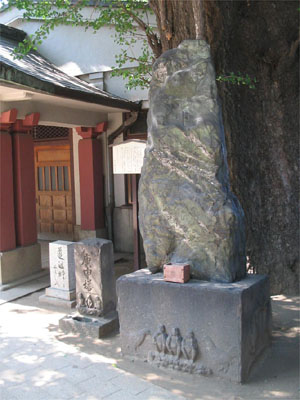When I was working in Japan, I heard a persistent rumor.
I heard that there had been a Japanese man who was a devotee of Avalokiteshvara Boddhisattva, known in China as "Guan Yin" and in Japan variously as "Kannon," "Kwanon," and "Kanzeon."
You could also add "Bosatsu" (Bodhisattva) after any of these to complete the full name. (When I walk, I often add the appropriate "Namo," meaning "Homage," to the front and say: "Namo Kanzeon Bosatsu," as its eight syllables make its rhythm perfect for walking.)
Anyway, this devotee was going to make cameras, and wanted to name his product after this great Buddhist figure, the Bodhisattva of compassion.
So he had a designer work up a logo, but it wasn't working. Then the designer suggested changing the spelling of "Kannon" a bit, and that's how "Canon Camera" came to be.
A wonderful story, but unconfirmed--until last March, when Lila sent me a link to this page, from which I stole the images below. I found a more coherent version of the story on the Canon home page, which confirms the details of the "rumor" as I heard it. Case solved.

Original "Kwanon" logo

Evolution of the Canon logo
Footnote 1: Another Canon page confirms that the "Kwanon" was never produced, and that the lens for the first Kwanons was called the "Kasyapa," the name of one of the historic Buddha's key disciples, and the purported founder of the Zen sect because he could "see" the truth of the Buddha's teachings clearly.
Footnote 2: When I was a tour guide at Hsi Lai Temple, I would tell this story, and say that security cameras made me think of Guan Yin (Kannon) watching over us. One visitor told me I had a rather naive understanding of the purpose of security cameras!








